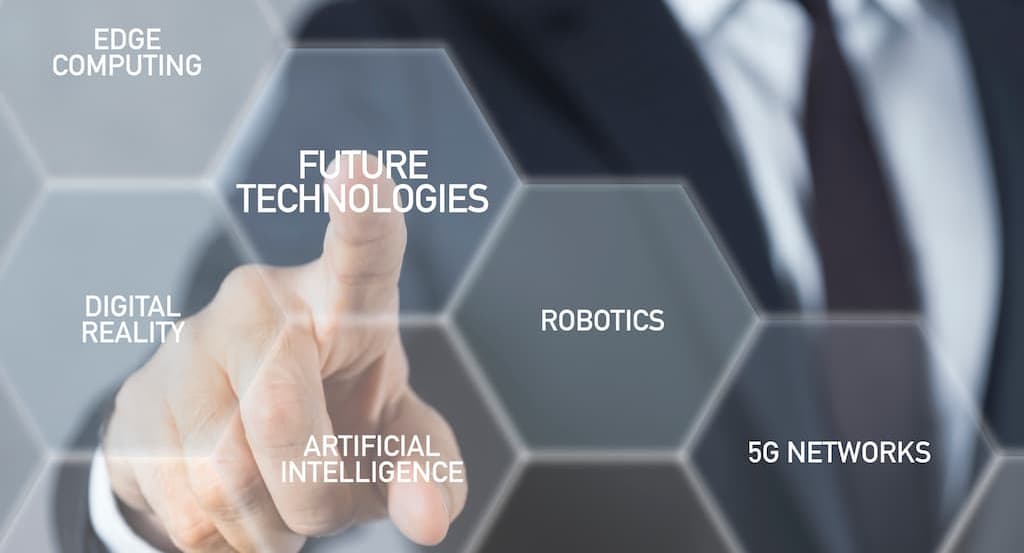
From now until the end of 2021, you will likely see myriad articles predicting what next year will bring as far as technology goes. For any blog post, eBook, or editorial that claims to predict what will happen, just click something else.
The fact is, no one can predict how technology (or nearly anything) will shake out even a few months from now. Look no further than a global pandemic that continues to influence every detail of our lives nearly two years after we first heard of something called “COVID-19.”
When it comes to Edge systems, and Edge computing in general, there are trends — not predictions! — that provide a sense of direction for what may happen in 2022.
A year ago, I posted an article on the growth of Edge data center computing, and that remarkable surge in Edge installations continues. Is that a “trend”? Sure, and there is a lot of relevant information there, yet it provides only a few insights into what 2022 may bring. Hopefully, the rest of this article will.
There Are No More Rules!
Well, at least for the foreseeable future.
Regardless of how they are labeled — “rules,” “guidelines,” “standard procedures,” or even “laws” — there are no rules. We used to be able to analyze past trends and apply proven rules that could help predict where technology may be headed. Today, many of these predictions seem downright naive, and rules no longer seem applicable.
Here is an example. Who would have predicted that thousands of new vehicles would be sitting across the U.S. waiting for computing chips? Malaysia, a critical link in the semiconductor supply chain, is suffering a severe labor shortage because of both catastrophic flooding and the global pandemic. There simply is no labor to make the chips.
Who could have predicted a worldwide shortage of computing chips, including this “perfect storm” of causes? No one! When will the chip supply bounce back to needed levels? No one can predict that (so I won’t even try).
Edge computing can do so much — process data at incredible speeds with high security and incredible repeatability — but it cannot prevent a global pandemic or solve supply chain snafus (thanks, Evergreen cargo ship).
Bottom line – let's all stop trying to set the rules for an unpredictable future. But let us learn from the past to improve future performance. To paraphrase Santayana: “Those who forget the past are condemned to repeat it.”
Technology Trends of Edge
- According to International Data Corporation (IDC), by 2025, 175 zettabytes of data will be generated around the globe with more than 90 zettabytes being created by Edge devices.
- Gartner estimates by that same year, 75% of all data will be processed outside of the traditional data center or cloud.
I could go on and on, yet these two stats alone are enough to drive home the benefits of performing data processing at the Edge of the network, close to the source of the data. As Edge computing becomes as common as cloud computing, demand will no doubt increase for scalability and centralized management.
Integration of 5G and Edge Computing
Logic has it that higher volumes of complex data and rapidly growing 5G networks will increase the importance of Edge computing as well as enable more Edge computing opportunities. That is largely true.
Yet, does 5G create more elitism around the Edge? In other words, does it open possibilities to more people (all people, perhaps?) or does it constrict open use of Edge computing? And how will this be applied? As a `Mobile Edge Solution’? Improving on current Edge technologies and applications. Or as I have said above – why try and predict what 5G will do for the Edge; especially when most of us are not even sure what it will do for your phone (except enable faster streaming for all that binge watching we need to catch up on).
An intersection between information technology (IT) and operational technology (OT) has resulted in better cooperation and visibility of supply chains and logistics, as well as better integration when it comes to automation and optimization. Those in charge of operational processes — including supervisory control and data acquisition, human/machine interfaces, distributed control systems, etc. — better understand the needs and requirements of IT and see the benefits of Edge computing.
The past’s computer elitism is disappearing, with everyday workers being able to accomplish a lot of what only IT professionals could previously. Knocking down traditional silos and expanding network capabilities have helped establish an equal playing field without the need for cumbersome or uncomfortable interactions between those who know IT and those who don’t.
I don’t know how to build a highway, but I know how to drive. Most Americans have the ability to get a driver’s license regardless of education, experience, or technical knowledge of vehicles. Think of the internet as the same thing; people do not need special permissions to use the internet or even know how it all works. They have equal access, like anyone else.
As 5G continues to roll out, Edge computing will get an additional boost from 5G’s speed, message-carrying capacity, and overall efficiency.
Shrinking the Digital Divide
5G could influence another trend: Are communities or certain areas becoming divided or united by their internet capabilities?
In general, we are all connected no matter where we are. That has been proven by how much the hybrid work environment has improved during the past 18 months. Efficiency numbers show that this situation that we have been forced into is working. Long gone are the days of a celebrity’s new selfie “breaking the internet.” It does not break, or even quiver, largely because of the effectiveness of Edge computing.
Here is an example of not just a united community, but a united world. A facility manager can be at corporate headquarters in Austin, Texas, and control a press in Sydney, Australia. Not just an on/off switch, but key and detailed manufacturing processes. And why should this facility manager be limited to the office? Operations can be controlled (while travel expenses are reduced and global pandemic risk limited) from anywhere!
Plus, that facility manager can see a temperature spike that requires attention or notice that upcoming maintenance is needed. This instantaneous and seamless integration is reducing any digital divide that has hampered productivity in the past.
IIoT Democratization
“Accessibility to everyone” has not always been a possibility when it comes to technology, especially something as powerful and complex as Edge computing.
All that the Industrial Internet of Things (IIoT) entails — big data, machine learning, machine-to-machine communication — it all is now accessible, or at least it should be. It is not limited to IT professionals who understand industrial applications, robotics, and software-defined production processes. As stated earlier, computer elitism is thankfully being wiped out.
That plays into all of us having more hyper-local autonomy. Many people using Edge systems have the ability to control work schedules and work flow, on an individual basis. This need to self-govern may have been thrust upon the working world by the pandemic, but it has widely been successful and largely possible because of Edge computing.
|
The Internet is Critical Infrastructure What do humans need to survive? Air, water, food, a home with power, etc. These days, however, an internet connection has evolved into a utility. From connecting with loved ones during months of isolation to working from remote locations to ordering important deliveries, the internet truly can be considered critical infrastructure. No, it’s not a trend, just an observation that influences how we look at 2022 and beyond. |
Reducing Susceptibility to Future Volatility
As stated earlier, Edge computing can only do so much. It cannot solely fix supply chain issues or cure a virus. But, it can play a part.
Solving today's labor shortage is a complex task, yet what logically seems to jump out as at least a partial solution is more Edge computing. More use of autonomous vehicles, for example, which are still mostly operated by humans. Autonomous vehicles rely on Edge computing to handle its demanding AI capabilities.
Even if the labor shortage is solved relatively quickly (yes, that’s a big IF), working through the challenge helps us all plan for future bottlenecks, which could be overcome through Edge computing. What those bottlenecks may be is a mystery (no predictions here!), yet the knowledge base is being built up by Edge systems to reduce susceptibility to future volatility.
The “Final Mile” is Now the “Final Meter”
Remember the “final mile”? The last distance traveled via fiber optic cables that really defines a network’s effectiveness and speed.
Today, the “final meter” is more appropriate. It is the distance immediately adjacent to the transit monitoring system or electric car charging station or machine on the factory floor. That is where the Edge really shines in maintaining connectivity and productivity.
That brings up more confusion within the industry. Where exactly is the Edge? Is it the Cloud Edge? The Micro Edge? The Multi-Access Edge? Well, it seems to be different for some industries than it is for others. The bottom line, in my opinion: the Edge will become more clearly defined the further into the future we go.
Again, no crystal ball here. So, predictions are useless. Yet, I hope these trends for 2022 make you think about where Edge systems and Edge computing are headed next year. Learn more now from the turnkey solutions found in our Edge Infrastructure Handbook. Just click the box below.
Next week, I’ll cover the top reasons you should care about Edge computing.



